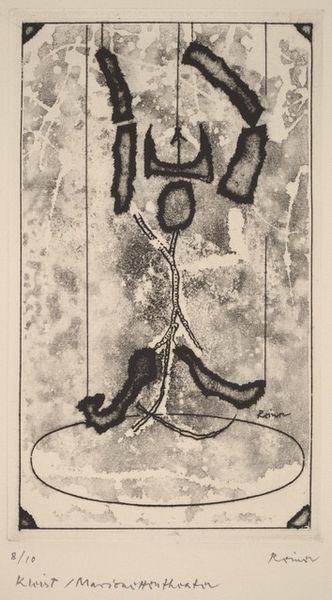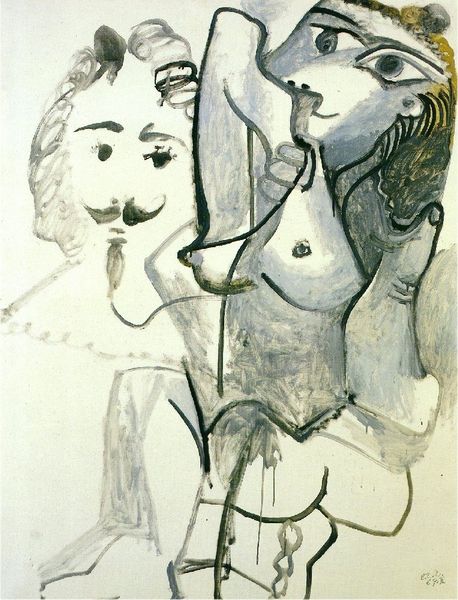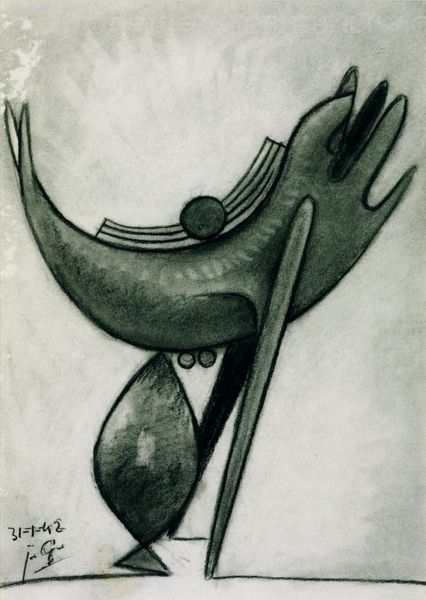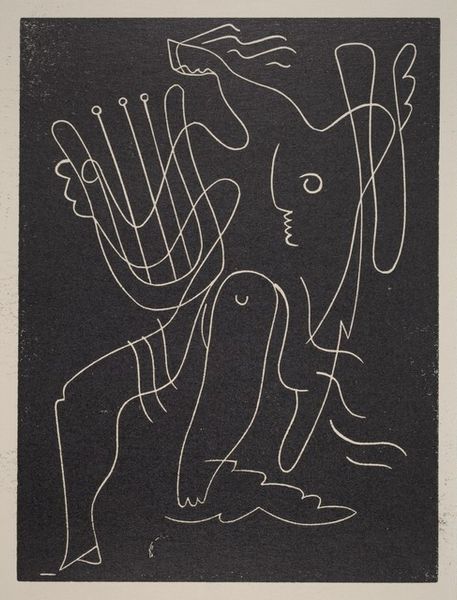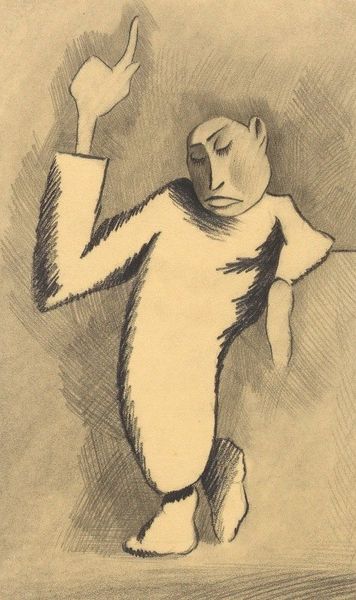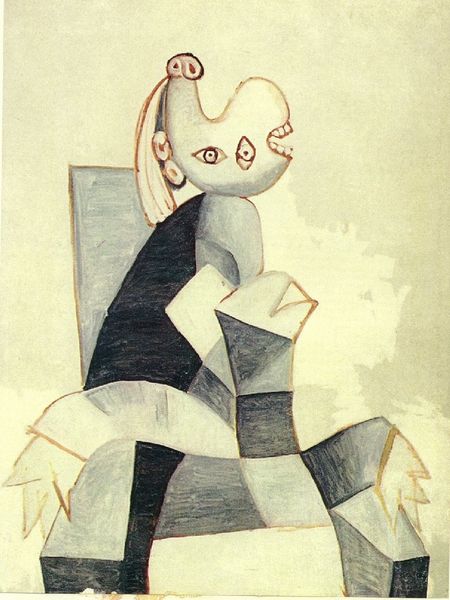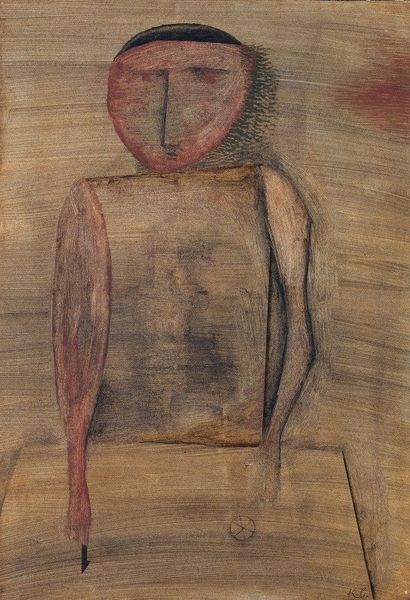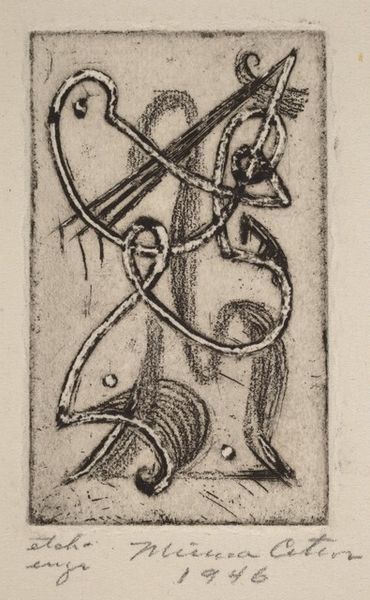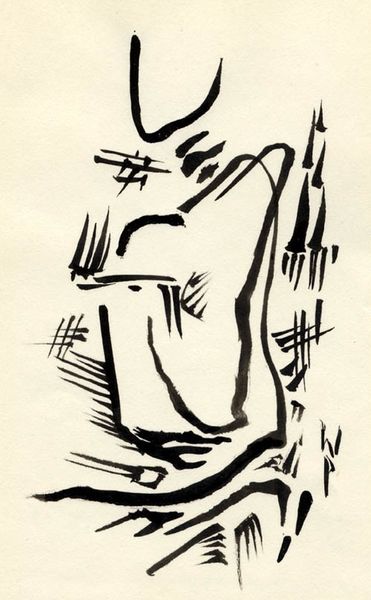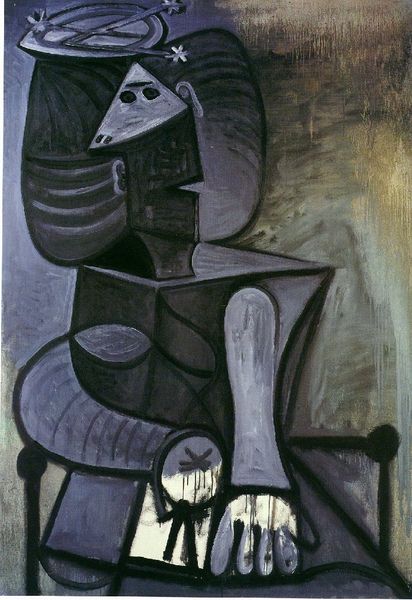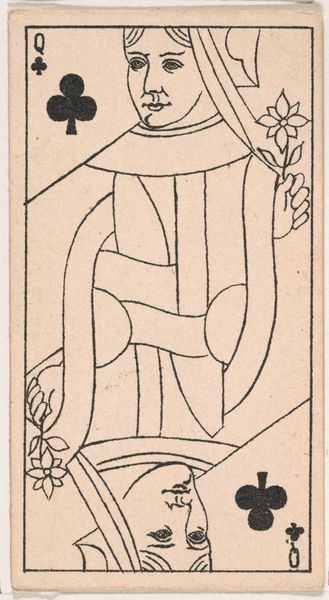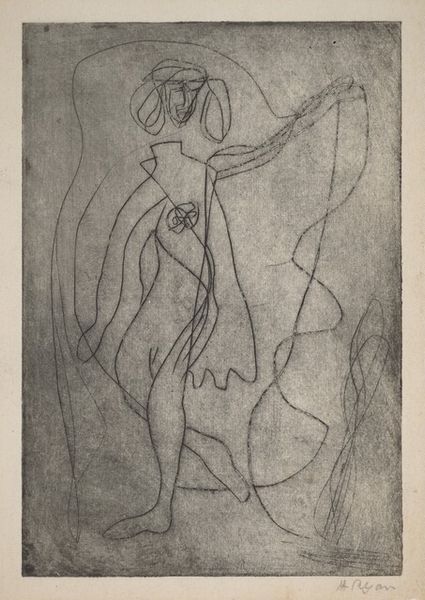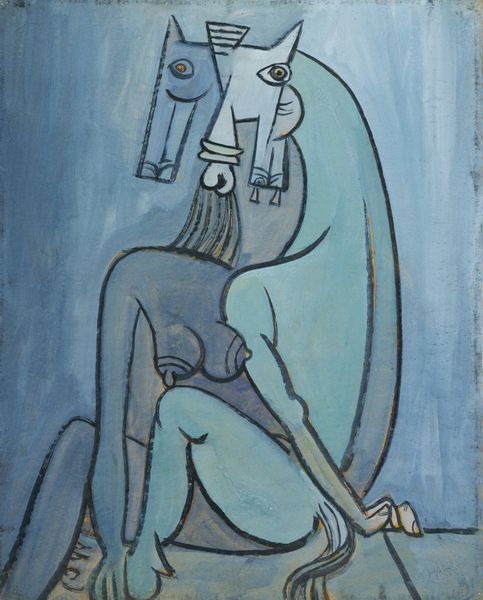
drawing
#
portrait
#
drawing
#
cubism
#
pencil sketch
#
figuration
#
sketch
#
abstraction
Dimensions: 129 x 98 cm
Copyright: Pablo Picasso,Fair Use
Curator: This pencil sketch, simply titled "Figure," was created by Pablo Picasso in 1927. I’m instantly drawn to its almost spectral quality. Editor: It feels haunted, definitely, in the best way. Look at that wavering line and thin wash! I immediately start thinking about paper. What kind was Picasso using for such an experimental work? The marks read as quick, searching, and anxious. Curator: Picasso certainly seemed to be exploring the boundary between representation and abstraction at this time, but the human figure still captivated him. It’s as if he was trying to deconstruct it, but couldn’t quite bring himself to let go entirely. Editor: Yes! It’s such a delicate dance. Notice how economical the marks are? Just enough to suggest limbs and features but it’s interesting, there's a tension between his facility and this very unstable ground, technically speaking, since drawing on paper makes it such an accessible material. Why elevate that gesture? Curator: It speaks to the incredible creative freedom he took. This isn’t necessarily about the finished object, but the process itself. This artwork encapsulates a certain mood—a search. Editor: And I think it reflects an intellectual problem as well. He wants to be free of representing things as they are; you can almost see him wrestling with it. A great drawing shows you more than just a thing. Curator: It seems almost prophetic. It suggests not just a portrait but perhaps also a psychological landscape. A state of mind? Editor: Absolutely. What lingers with me is the raw, almost disposable feeling of this sketch on paper; its power lies in that seemingly provisional quality, challenging our reverence for precious materials and “finished” art. Curator: Precisely! It captures that fleeting moment when the artist’s mind meets the medium, revealing something deeper and perhaps, more truthful. Editor: And in that gesture of immediacy lies its power to haunt us and make us reflect on labor and its implications in what makes up "art."
Comments
No comments
Be the first to comment and join the conversation on the ultimate creative platform.
